We asked professionals in the sector to tell us what the next year could bring, this is what they said
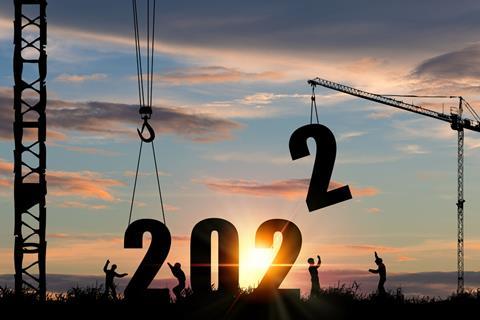
There’s plenty of folk saying good riddance to 2021, but will the next 12 months be any better? We ask some leading construction and design professionals.
Construction needs to be a force for good
Claudine Blamey, Head of Sustainability and Digital Strategy at Argent

I’d like our sector to continue establishing itself as a force for good this year. Our model for King’s Cross, one that takes a long-term view and embraces the environment and social value, is based on our belief that we can have a positive impact on the country, cities and communities while being commercially minded.
Sustainability is clearly a huge part of those goals. Post-COP26 it feels like we are focused on meaningful action for the first time and that investors are starting to pay attention. To build on that momentum this year, we must now develop a standardised set of definitions and metrics to support our collective journey to net zero.
Businesses currently have an impossible task in unpicking the varying guidance and endless carbon commitments. There’s the WorldGBC, the UN, London Energy Transformation Initiative and Science Based Targets, to name but a few. Our sector needs a consistent framework that encompasses everything: operational and embodied carbon – historic, present and future. If we can identify a universal way of measuring impact and progress, then we can work together, share insight and best practice, and ensure we all cross the finish line ahead of 2050.
Real innovation needs to come out on top
Lee Polisano, president and founder, PLP Architecture

In many ways there can be a lot of optimism for 2022. Over the year we experienced countless disruptions to our lives. I think that it has mentally prepared us to better consider and accept that we can make radical, systematic changes when needed.
I am hoping that this mindset will feed into our industry this year, particularly with regards to reducing our carbon output. We have the knowledge, skillsets, technology and by-in-large the enthusiasm to change how we design and deliver our buildings. Yet our greatest gains in carbon reduction will not be realised without significant innovation within the construction industry and its supply chains.
Innovation is in no short supply, and I hope that this is the year where we see more breakthroughs in the realisation of low-carbon products and systems being moved from prototype to mass adoption. My fear however is that the regulatory environment set up by many governments will stifle real innovation in favour of an easier ride to compliance. Unfortunately, most regulatory controls – including our current planning policies – fail to realise the importance that incentives can play in real innovation; exactly what is now needed.
We will need, as an industry, to be bold and to take big leaps. In terms of carbon reduction, we need to move the needle dramatically; with new materials and new methodologies, which will require significant investment if they are to be realised. Our industry is one of the highest producers of carbon and we have the ability to address that.
I am hopeful that real innovation will come out on top this year. But I am fearful that near-sighted politically expedient regulatory policies will continue to ignore the power of incentives, in favour of business as usual.
Inflation will be the challenge for 2022
Andrew Davies, Kier chief executive
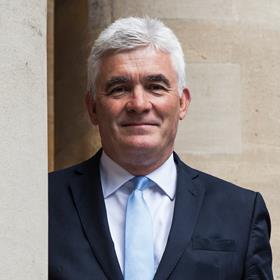
Public sector construction has really struggled, there were delays on frameworks but they are largely over now and are coming to fruition, such as the DfE Framework which we have been reappointed to.
I think covid-19 has largely been managed pretty well in this country and, as a sector, we were fortunate we could remain open. There’s a general realisation that we’re going to have to live with covid-19. Now the challenge is how to manage it dynamically within constantly-changing parameters, such as the latest guidance on Plan B.
We need to run at it hard, this is a new phase and businesses need momentum.
Inflation is clearly an issue, labour and materials go hand in hand and it will depend on where you operate and what you’re building. So, it depends on the region and the supply chain relationships that you have. I’m an eternal optimist, I think we’ve done the hard yards.
You have to believe that the future will be better than the past. But I’m a big believer in self-help, if you run a business it’s up to you to make it happen.”
Let’s commit to getting buildings to reach the highest standards
Gabriela Guizzo, project director construction at HB Reavis UK

My hope is to see the industry step up and commit to a deeper understanding and pursuit of the certification systems and industry standards.
Perhaps there’s a perception that gaining top accreditations for buildings is a little like collecting medals for your trophy cabinet. But that’s not the case. These are a set of meaningful guidelines and practices that will shape the world we leave to our grandchildren. At HB Reavis, we set out for Bloom Clerkenwell to be the first commercial building in Europe to achieve WELL Platinum, BREEAM Outstanding and WiredScore Platinum, the highest certifications for sustainability, wellbeing and connectivity.
Setting this benchmark held us to account. We had to apply a critical lens to every inch of our project, interrogating every element, from who needed to be on site each day and what welfare facilities they required through to waste management. This led to us being able to recycle 100% of our construction waste – something we never thought possible before embarking on this project. Taking this detailed approach also led us to implement other initiatives that raised the bar and increased the benefits to all building users, like including large terraces and creating access to outdoor space for all.
Fewer than 1% of UK new non-domestic buildings have achieved BREEAM Outstanding. 0.3% of UK WELL registered projects are certified Platinum. It’s not good enough. More must be done to educate people on why these certifications matter, from what they mean for the good of the planet to the good of the individual.
Focus on mental health
Andy Yates, Director, Webb Yates Engineers
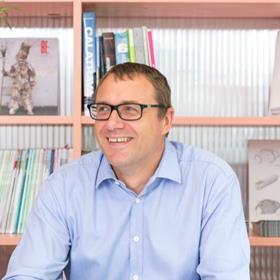
My lasting hope for 2022, and beyond, is that we collectively and fundamentally address the climate emergency. This is particularly the case for the built environment sector, where our actions over the next few years are the most critical for giving ourselves the best chance of mitigating the worst effects of climate change. We already have the tools, skills and ingenuity to address the issues.
Maybe ‘hope’ is not a strong or positive enough word; I am confident that there is sufficient will, momentum and determination within our industry to ensure that 2022 is remembered as the year that we got our act together and made real change.
My fear is that the ongoing adverse impacts of covid-19 on our mental health will persist throughout and beyond 2022. I am deeply saddened by the human cost of the pandemic but I am especially concerned about the hidden and potentially long lasting damage which the pandemic is causing to our mental health.
Personally, covid-19 has already taken a considerable toll on my own mental health, but I feel fortunate to have support from friends, family and the great outdoors. I fear that the ongoing pandemic will cause significant damage, particularly for younger generations, and such that it may take years before the full impacts are recognised. However, being optimistic, I sincerely hope that changes to working practices, improved awareness and ongoing support will assist with alleviating some of these impacts.
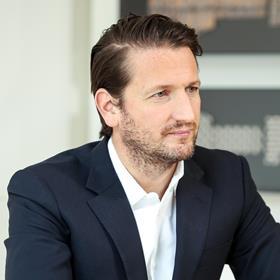
We need to move past covid
Henry Squire, partner at Squire & Partners
Hopes for next year: To be able to move past covid and to get the world vaccinated. To win some work in a new country that we haven’t visited before. To take our office away on a trip to reconnect with each other and be inspired. To make new friends/clients and reconnect with old ones.
To step out of our comfort zone and to do different types of work. To carry out a project from a framework we get on. To make more architectural models. To find time to write. To remember to have fun in everything you do both at work and home. To get the band back together for a ‘monster’ gig for our 50th birthday celebrations.
Fears: The only real fear is stagnation.
Life sciences and data centres are the sectors to watch
Michael Riordan, managing director UK at Linesight
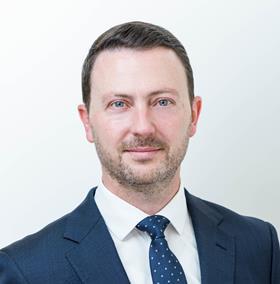
Covid will continue to impact the construction sector well into 2022, with supply chain issues and inflationary pressures persisting. Efficient intelligent procurement strategies across all sectors will be required to mitigate associated risks.
With increasing pressure for vaccine equity to combat the impact of new covid-19 variants, the demand for construction of rapid-build manufacturing facilities will continue. We are seeing increased interest from investors and developers in building and repurposing life science real estate in urban locations. Digitisation, including technologies such as AI, will be key to developing fast, leaner processes to improve speed to market and supply chain efficiency.
In the data centre arena, we foresee intense pressure on specialist contractors, which will make tendering a difficult process and may result in clients seeking to negotiate with preferred partners. Changes in procurement strategy are also likely, as many switch to a two-stage approach in order to mitigate programme and delivery risks on long lead-time items.
Following on from COP-26, we anticipate strong growth in our work in the hydrogen and gigafactory areas, as the world focuses on making renewable power sources both available and economical. Across the board, our clients will continue to focus on buildings that use less energy, resources and materials, helping them to save carbon and reduce their energy requirements.
Across all sectors, advanced strategies will be needed to procure the right materials and products, at optimal prices and with the shortest travel times. Early engagement with the supply chain will be more vital than ever and Linesight will also be deploying our international Scheduling Centre of Excellence to guide our global teams.
This has to be the year we embrace open source data
Jason Hawthorne, founding director of VU.CITY
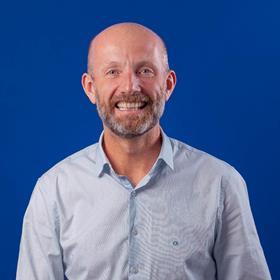
The implementation of smart technology will make planning and development more accessible, engaging and accurate. Yet, digitisation alone is not enough to confront the serious environmental and infrastructural challenges we face. We need more open-source data to enable better and faster decisions.
Better access to data isn’t a “nice to have”, it’s an urgent requirement to ensure we as an industry can build the smart, green hubs needed to benefit communities and save the planet. Individual landowners, developers and architects have made great strides in this area, from overseeing major office retrofits to creating ultra-low carbon housing developments. But, to deliver positive change on a macro scale, we must work more collaboratively. This can be achieved when data from the widest range of sources possible is shared openly, thereby democratising the process and enabling better decisions by all.
To build the best cities, decision-makers must be able to understand at a glance the amount of energy used in buildings, the levels of air pollution in different areas and traffic flow. By seeing the bigger picture, they can drill down effectively into challenged areas, those which need regeneration or support and invest the resources required. Smart technology platforms already exist with the power to visualise multiple layers of information, but we need access to all the right data to do it.
Taking a more visual, holistic and data-led approach in 2022 will ensure our cities are more resilient, efficient and better to live in
Appreciation for outdoor space must continue
Elizabeth Staveley, master planning and landscape studio leader, HKS Architects

One of the lasting legacies of the pandemic will be our heightened awareness and appreciation for outdoor space. During a time of immense flux in the world, landscape and public realm has become a focus for community activity, as venues for open air gatherings, dining and re-connecting with nature.
HKS are fortunate to be working with a number of clients on international projects that are prioritising the public realm in the development process. Investors are aware of its means to facilitate and focus both social and urban regeneration. There is increasing awareness of the value that a well-designed public realm can play in bringing communities together and improving wellness, as well as increasing asset value. It’s a welcome recognition of the value of green space and nature in our lives.
In 2022 we will be focussing on how we can quantify the value of parks, piazzas and public landscape, not only in fiscal terms but also the added social and environmental value; the ‘natural capital’.If we can more effectively measure a public realm’s value, it will ensure that it is prioritised as an integral part of the master planning process.
The masterplanning team will also be focussing on ‘inclusivity’ throughout our business and projects to further enhance these values, creating spaces and places that are to the benefit of all.
Diversity and inclusion must be at industry forefront
Laura Collins, Project Director, Stanhope
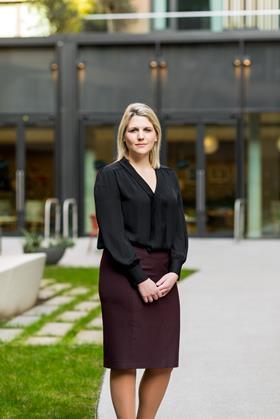
In 2022, I would like to see the industry truly focus on diversity and inclusion.
There isn’t one conversation, one press article, one event that doesn’t mention ESG, but what are we actually doing about addressing this part of the issue?
This should not be seen as a box ticking exercise, something that will make us look good or just a Section 106 obligation. This is about making our industry fit for purpose.
If we want it to continue to thrive, we must take a long, hard look at ourselves and honestly assess our collective failings. We need to come together to recognise, and share, the challenges that minority groups in our industry are facing, and to promote allyship.
We must also shout louder about the fantastic opportunities available in our industry if we are to attract people from all backgrounds, and actively reach out to new people instead of waiting for them to come to us. We must proudly showcase the achievements of our talent, so others can be inspired. We must stop treating our workforce as one homogenous group but instead value their differences and provide benefits that promote equality, be that shared parental leave, job shares or flexible working patterns which other industries have been much quicker to adopt. We made a start during the pandemic, let’s build on it rather than slip into old ways again.
Let’s not waste another year. Let’s make sure we make the most of 2022 to find solutions to truly modernise our industry and take action to secure its future.

























No comments yet